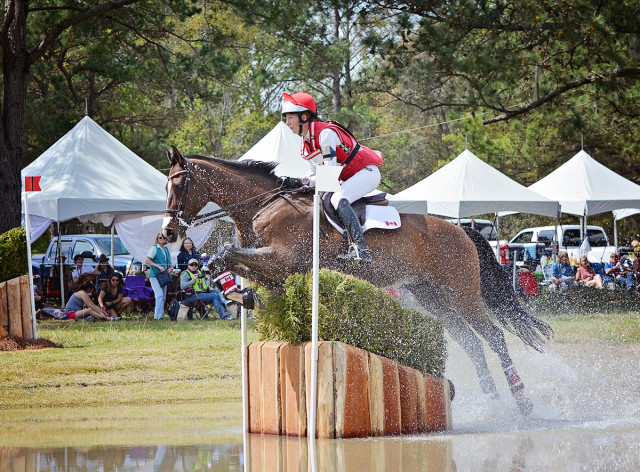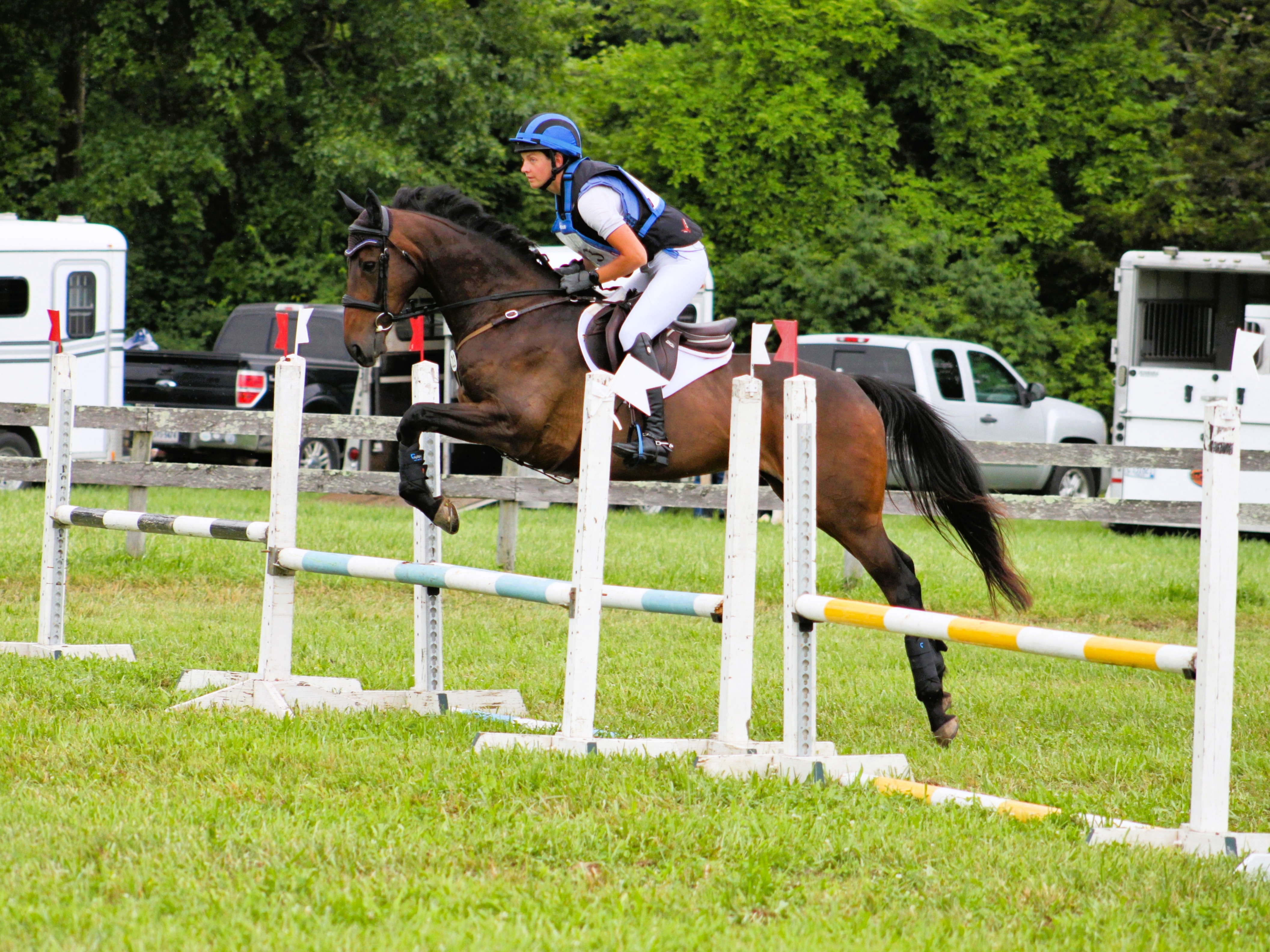
Stable View is adding FEI divisions in 2018 to the popular Advanced Oktoberfest Horse Trials, Sept. 28-30 in Aiken, South Carolina. Photo by Leslie Threlkeld.
New year, new competition schedule! From new horse trials to surprising cancellations on the North American eventing calendar, EN has compiled a list of canceled events and divisions, new events and divisions, date changes, plus which events are offering the new Modified division.
If you know of a change to an event that is not listed below, please email [email protected] so we can update the list. Best of luck to all in the 2018 season! Go Eventing.
Canceled Events & Divisions
No Wellington Eventing Showcase: Equestrian Sports Productions confirmed to EN that the Wellington Eventing Showcase (Wellington, Florida) will not run in 2018 due to a scheduling conflict with. [Full Story]
No CIC3* at Pine Top: Pine Top (Thomson, Georgia) has run the first CIC3* of the year in the U.S. for the past two seasons, but there is no CIC3* in 2018. Pine Top will still run the CIC2* and CIC1*, as well as National divisions for Training-Advanced on Feb. 22-25. [Omnibus Listing]
Inaugural Event at Live Oak Canceled: We were excited to see Live Oak receive approval to add a CIC3* during its popular show jumping and driving competition on March 17-18, but the horse trials have now been canceled. [Canceled Omnibus Listing]
Advanced Division Pending at Carolina International: While there is no Advanced division currently listed on the omnibus for Carolina International Horse Trials (Raeford, North Carolina), the event has applied to add it back onto the schedule. Stay tuned to the omnibus listing. [Omnibus]
Colorado Horse Park Cancels Three Events: Colorado Horse Park (Parker, Colorado) has canceled three horse trials in May, August and September in order to focus on running the American Eventing Championships. [Full Story]
Roebke’s Run Cancels Both Horse Trials: Roebke’s Run (Hector, Minnesota) has canceled both the June and July horse trials. [Full Story]
Grindstone Mountain Cancels Both Events: Grindstone Mountain Farm (Southampton, Massachusetts) has canceled both the May and September horse trials. [Canceled Omnibus Listing]
No Event at Aspen Ridge: Aspen Ridge H.T. (Monument, Colorado) has canceled the July 14-15 event. [Canceled Omnibus Listing]
No Fall Event at Surefire: Surefire Farm (Purcellville, Virginia) has canceled the fall horse trials, Sept. 29-30, but will still host the summer horse trials on June 22-24. [Canceled Omnibus Listing]
New Events & Divisions
New Event in Southern Arizona: Southern Arizona H.T. (Tuscon, Arizona) is set to host its inaugural horse trials March 24-25, with Beginner Novice through Preliminary/Training divisions. Adri Doyle is the cross country course designer and Manuela Propfe is the show jumping course designer. We look forward to following along with this Area X addition. [Omnibus Listing]
New Event at Grand Oaks: Grand Oaks (Weirsdale, Florida) will host its inaugural horse trials Jan. 18-21, with Preliminary-Beginner Novice divisions. Clayton Fredericks is the cross country course designer, with Chris Barnard as show jumping course designer. Grand Oaks will also host a fall horse trials on Nov. 23-25. [Omnibus Listing]
Heart of the Carolinas Adding Preliminary & P3D: Heart of the Carolinas (Chesterfield, South Carolina) is adding a Preliminary division and a Preliminary Three-Day to the May 3-6 event. Heart of the Carolinas, Waredaca and Hagyard MidSouth are now the only venues in the country offering a P3D. [Omnibus Listing]
New Event at Horse Park of New Jersey: The NJ Region’s Horse Trials will run for the first time at the Horse Park of New Jersey, June 2-3, with Beginner Novice through Modified divisions. [Omnibus Listing]
Five Points Returns to Carolina Horse Park: After taking a hiatus in 2017, Five Points H.T. (Raeford, North Carolina) is back on the autumn calendar, offering Beginner Novice-Advanced divisions, as well as FEH and YEH classes, on Sept. 8. [Omnibus Listing]
Event at Archer Adds New Date: The Event at Archer (Cheyenne, Wyoming) is adding an additional date with Starter-Preliminary levels to fill the May 31-June 3 gap on the Area IX calendar due to Colorado Horse Park canceling its horse trials. [Omnibus Listing]
Power Basin Horse Trials Adding Prelim: Powder Basin Horse Trials (Gillette, Wyoming) is adding a Preliminary division to the July 7-8 event in order to fill the Area IX calendar following the cancellations at Colorado Horse Park. [Omnibus Listing]
Maryland Horse Trials Adds FEH/YEH/NEH Qualifiers: Maryland Horse Trials (Adamstown, Maryland) is adding qualifiers for the USEA Future Event Horse, Young Event Horse and New Event Horse programs on April 24, May 26 and Sept. 1. [New Event Horse Program]
Bromont Adding New CIC Competition: Bromont is adding a new competition with a CIC3*, CIC2* and CIC1* for Aug. 18-19 in Quebec with Derek di Grazia as course designer. [Full Story]
Foshay International Coming to New Brunswick: Foshay International will host the first FEI event in Atlantic Canada over Labor Day weekend, Aug.-Sept. 2 in New Brunswick, offering the FEI’s new Introductory level and a CCI1*. [Full Story]
Stable View Adding CIC3*, CIC2*, CIC1*: Stable View is adding FEI divisions to their popular Advanced Oktoberfest Horse Trials, Sept. 28-30 in Aiken, South Carolina. [Omnibus Listing]
MDHT Adds Beginner Novice Three-Day: Maryland Horse Trials (Adamstown, Maryland) is adding a Beginner Novice Three-Day to the Oct. 12-14 horse trials. They are now the fifth event in the country to to host a BN3DE. [Omnibus Listing]
Ocala Jockey Club Adding CCI3*: Event organizer Shelley Page confirmed that the Ocala Jockey Club will add a CCI3* on Nov 15-18 in Ocala, Florida. [Omnibus Listing]
Date Changes
Stone Gate Farm H.T. Moving to August: Stone Gate Farm H.T. (Hanoverton, Ohio) is moving to an earlier date, Aug. 24-26, to prevent a conflict with the World Equestrian Games. The event offers Starter-Preliminary divisions, as well as Young Event Horse, Future Event Horse and New Event Horse divisions. [Omnibus Listing]
Plantation Field One Week Later: Plantation Field International Horse Trials is shifted back one week on the calendar to Sept. 20-23. While the event usually runs the second weekend in September, eventing at the 2018 World Equestrian Games will be running that weekend at Tryon. [Omnibus Listing]




































